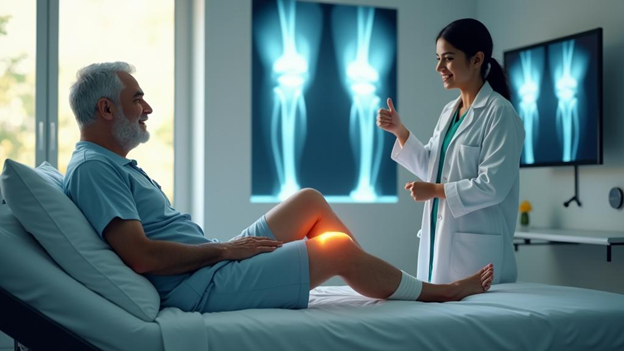Having trouble with knee pain? A high tibial osteotomy might be the answer to regain mobility and comfort. This surgical procedure is crucial for those who wish to alleviate knee pain and return to an active lifestyle. Today, we’ll explore what this surgery involves and how it can be a game-changer for people suffering from knee issues.
Understanding High Tibial Osteotomy: A Comprehensive Overview
So, what exactly is a high tibial osteotomy? It’s a procedure where the surgeon makes a small cut in the upper part of the shinbone, also called the tibia. This helps to realign the knee joint, reducing pain and making movement easier. It’s great for individuals with arthritis in just one part of the knee.
The surgery works by redistributing the body’s weight. This reduces the stress on the damaged area of the knee. Post-surgery, most people see positive outcomes like decreased pain and improved movement. It typically involves a few days in the hospital. But don’t worry; recovery involves physical therapy and support to ensure everything heals properly.
The goal is clear: get people back on their feet with less pain and more function. By understanding the basics of a high tibial osteotomy, you can see how it might help your specific knee issues.
Advantages of High Tibial Osteotomy Over Joint Replacement
Why choose a high tibial osteotomy instead of a joint replacement? For many, it offers benefits that align better with their needs. Unlike joint replacement, it keeps the natural knee joint, which is often preferable for younger patients.
The long-term benefits include maintaining more natural movement and avoiding some of the complications that can arise with artificial joints. It offers a proactive approach. People can preserve their knee’s natural structures and perhaps avoid more invasive procedures down the line.
Personal Stories: Transformative Benefits of Undergoing High Tibial Osteotomy
Consider the story of John, a 58-year-old who endured knee pain for years. The benefits of undergoing high tibial osteotomy changed his life. Before the surgery, even walking to the mailbox was tough for John. But after the procedure, things improved.
He noticed that the pain diminished significantly. Plus, his ability to walk longer distances grew exponentially. “I didn’t think I’d ever enjoy walking around the park again,” John shared, “but now I can, pain-free!”
Through his experience, the high tibial osteotomy offered him a fresh start. It helped him regain his beloved activities and cherish moments with his family. Stories like John’s illustrate how surgery doesn’t just fix a knee, it renovates quality of life.
Restoring an Active Lifestyle: The Impact of High Tibial Osteotomy on Daily Activities
How does a high tibial osteotomy help return to normal daily life? Post-surgery, many resume their favorite activities, often with greater ease than before. It allows people to stay active without worrying about knee pain slowing them down.
This procedure is pivotal. People can reconnect with what they love—whether it’s walking, gardening, or enjoying social gatherings. The renewed strength and mobility are key, enabling a fulfilling life without constant discomfort.
Technical Insights: Leg Axes, Joint Angles, and the Anatomy of Osteotomy
A big part of a high tibial osteotomy is correcting leg axes and joint angles. Imagine your legs as level structures; failure in alignment can cause pain. This surgery realigns everything.
Correctly adjusting these angles ensures your body weight is distributed evenly across your knee. This correction often leads to better surgical outcomes, with a high success rate. Every realignment aims to eliminate uneven pressure, which typically causes pain.
Innovations in Osteotomy: Technology and Software-Assisted Planning
Innovation plays a large role in high tibial osteotomy procedures. Technology helps plan the surgery more accurately, ensuring effective treatment. With advancements like software tools, surgeons can predict outcomes and tailor approaches. Tools such as AO Surgery Reference have become crucial.
These software systems guide professionals in creating plans and predicting the impact on knee deformities. They offer visual insights beforehand. This technological edge is paramount in not just diagnosis but repair as well.
Conclusion: Investing in Your Knee Health for the Future
The discussed benefits of a high tibial osteotomy speak for themselves. By opting for this surgery, you’re investing in long-term knee health. It’s not just about mobility today; it’s about sustaining movement for years ahead.
Proactive knee care is crucial. Investing in it now means fewer complications later. Consider speaking to a professional if knee pain impacts your life. Surgery might seem daunting, but it offers a future full of mobility and less discomfort.



